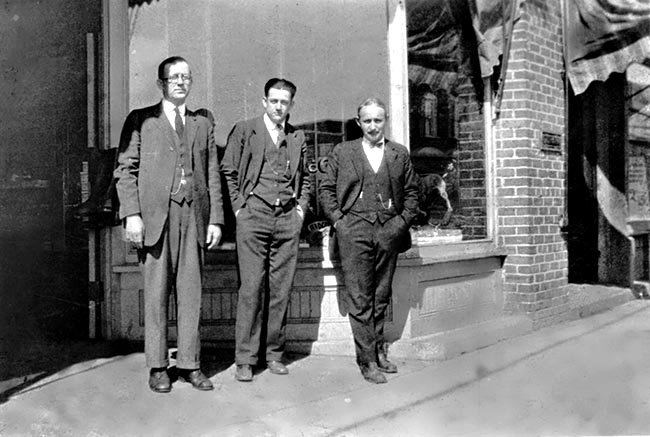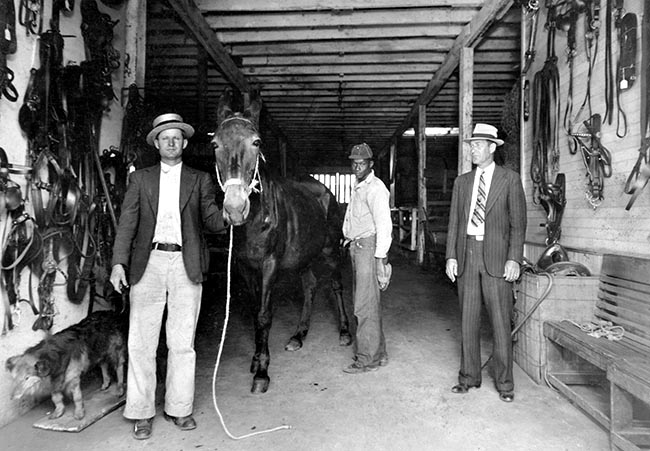Two downtown merchants in the 1920s and 1930s were dear to me and to my family. Both of my grandfathers operated businesses during this time, and both made their marks on the community.
Claud Pemberton McGirt opened his general merchandise business in Fairmont in 1916. He came from Rowland and grew up in the Cotton Valley section near there. He was employed by the Curtis Company as a salesman and many of his first Fairmont customers followed him from the Rowland area.

C. P. McGirt with employees Damon Floyd and Durham Mitchell in late 1920s. Photo credit: McGirt family archive.
Finding a suitable location on Main Street beside P. R. Floyd Co., he purchased the building and remained there until his death in March, 1941. He sold farm equipment, farm supplies, fertilizers and household items. He also sold sewing fabrics since "readymade" clothes were a luxury for many families. Several older ladies told me of standing in line for the new cloth shipment that had just arrived. "Mr. McGirt," said one lady, "always had the prettiest fabrics and the widest selection in town."
The depression hit him hard as he did quite a bit of business on "fall terms." My dad told me that many days the total cash receipts would be 50 cents. Much of the credit business died when he did. Little, if any, money was collected by his estate. Sadly, this was typical of the times.
Robert Oscar Floyd opened a stable on Center Street in the 1930s. He was a mule trader, just one of several in the immediate area. He and his brother Fred operated Floyd Dairy and he also farmed. In the late 1930s he opened a grocery store on Iona Street a block from the bank.

Robert O. Floyd in his Center Street stable, 1930s. Photo credit: Floyd family archive.
He did all of this to take care of his growing family that eventually became eight children. My mother was the eldest girl. The Great Depression made him very frugal, a trait which was inherited by mom. In 1949 he established Floyd Memorial Cemetery, which became Fairmont's primary cemetery during the 1960s.
Both of my grandfathers were active in community and church affairs, each serving when called upon. Their legacy was one of quiet service to the community.





